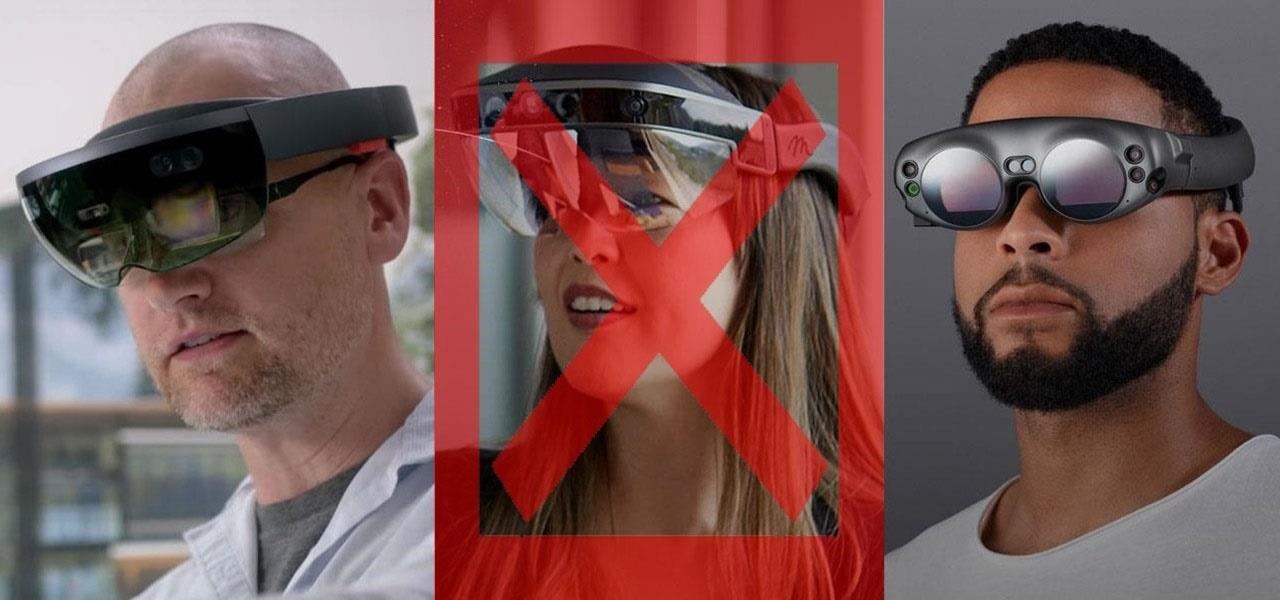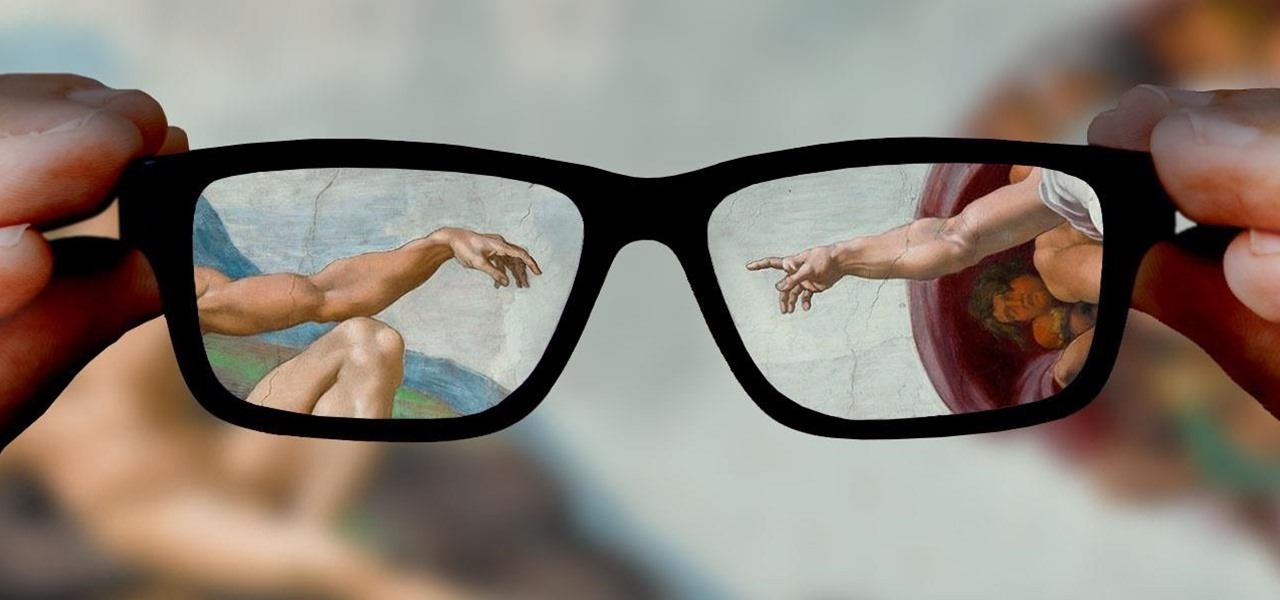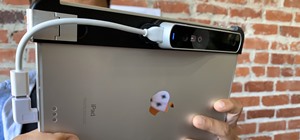People fundamentally distrust magicians. And they should. The illusions they proffer are just that, illusions meant to astound rather than tangible interactions and results that have weight and meaning in our real world. Our lizard brains know this, and, no matter what the outstanding feat of "magic" presented, we nevertheless hold fast to our survival-based grip on the truth: we just saw simply "can't be real."
That is, unless the magic "is" real, and the observer simply isn't aware of the scientific and/or technological underpinnings of the experience (see Arthur C. Clarke's "Third Law"). I believe that it's this kind of psychological disconnect that has plagued the rise of virtual reality, and now, rather predictably, augmented reality.
For many, AR and VR have been viewed as trivial distractions. A sideshow filled with shiny lights, unworthy of the serious attention needed for more substantive areas of technology. Views around immersive computing are rapidly changing in some quarters, but for many operating outside of the AR and VR industry, the skepticism around the space remains steadfast.
The problem now is that many people the general public relies on for guidance through the tricky frontier of emerging technology have allowed this "magic" disconnect to frame their still shaky grasp on a future that is, quite literally, impossible to grasp.
To explain this phenomenon, rather than roll out all of tech history's past incorrect guesses about the future (remember when the iPad sucked? When the iPhone sucked? When even the internet sucked?) I think it's more helpful to explain how this disconnect happens for many of the Wall Street analysts, media experts, and, yes, even consumers.
Abracadabra! Techno Change-O!
Since we're talking about AR, let's use yet another visual medium to explain what's at work for many experiencing this disconnect: cinematic storytelling.
Much of what we're seeing when it comes to AR and VR analysis can be deciphered by referencing the Kuleshov effect. Demonstrated by Russian filmmaker Lev Kuleshov during the dawn of the film era, the Kuleshov effect reveals how the meaning and import of a single, unchanged image can dramatically change when sequentially juxtaposed alongside a different image (see video below).
In short, context changes everything. What appears to be a person's disdainful smirk, can quickly transform into a longing look of love if you place the person's facial expression within a different context. Context is king.
This device is useful for storytellers who have their finger on the pulse of the broader public. It's why the Kuleshov effect in modern films can elicit a simultaneous laugh at the exact same time for nearly all audience members in a theater. Most people in the theater understand the context of the information being presented.
However, there's almost always a small portion of the audience left out of the cultural moment due to inattention to the scene or perhaps — and this is important — an incomplete grasp of the mainstream cultural cues the director used to tell the story.
But what if the balance were reversed? What if, instead of a mainstream film, the movie was a documentary about an obscure branch of particle physics, shown at a screening room at MIT? In that case, the contextual power of the Kuleshov effect would still work…but only for the physicists and amateur science nerds in the room. Anyone else in the audience not fitting that description would likely be left a bit bewildered at the various cheers, hisses, and uncomfortable squirming during certain scenes because they aren't fluent in the discrete language being used to tell this physics documentary story.
That's what it's like watching so many incredibly smart, seasoned, and almost always insightful people attempt to dissect and analyze the immersive computing space while only occasionally dipping their toes in the virtual waters. Often, the same factors one analyst will use to explain the success of an established, well-understood technology are the same factors used to explain why some new, emerging tech (in this case, AR and VR) isn't meeting expectations. The Kuleshov effect reveals itself in the narrative biases of some whose new-tech myopia has led them to dismiss the power and potential of AR and VR.
A bi-annual trip to the Hayden Planetarium and an occasional Netflix weekend of space documentaries doesn't really equip you to suss out the true state of String Theory discourse any more than going to tech conferences a few times a year and trying on headsets for a few hours gives you the ability to divine the future of AR and VR.
Unlike sites like The Wirecutter, where every reviewer adds a lengthy (and appreciated) statement about why you should trust their research on a particular area, many people discussing the intricacies of immersive computing aren't required to provide any context for their context. Thus, you have a good deal of AR and VR analysis that adds 1 + 1 and comes up with 13, because…well, uhm, common sense?
Fear, Uncertainty, & Doubt
This largely context-deficient analysis leads to what many in business call FUD (fear, uncertainty, and doubt).
Of course, sometimes the FUD isn't just gleeful schadenfreude sprinkled on a space, product, or stock that someone doesn't take seriously. Sometimes the so-called FUD is absolutely real and should serve as a red flag to warn you to direct your attention and resources elsewhere. Sometimes the naysayers are right. But in the technology space, those naysayers are just as often wrong.
So then, why does FUD spread so easily? Well, like a cigarette butt of rumor tossed out of the window of a passing car along the hillsides of Southern California, the tiny tinder of negative speculation can quickly grow into a respectable brush fire.
Here's the dirty secret about information that we all know but often forget: bad news is fun! If it bleeds it leads, as they say. Still, whether the starting place of some of these broadly negative AR and VR stories are born from a legitimate pursuit of the truth, or the pursuit of a quick website traffic spike, the consistent thread is that most of them hinge upon a contextual grasp that isn't in line with the reality being experienced by those deeply devoted to exploring the software, hardware, and infrastructure dynamics of immersive computing.

I remember calling out into the void back in 2016 that newly commercialized VR (via Oculus Rift and HTC Vive) was not only amazing but something everyone should experience. That was a lonely time. Some of your favorite tech media experts literally guffawed at the rank meaninglessness and frivolity of VR and any company selling it. Repeatedly shining a spotlight on, for example, Google Cardboard as proof of VR's ridiculousness. I could link them all here, but there were so many, it's really not fair to single out one. Today? The Oculus Quest is so popular that it's not only sold out in most places, but it's selling for double its retail price as resellers try to profit from the demand.
"But that's only because Quest is a much better version of a mainstream VR system, it's not the same as what was being sold before!" You're not wrong, faceless naysayer. However, that argument is only relevant if you happen to live in some perfect reality that isn't iterative. A reality where innovation and new products arrive — poof! — fully formed and only in need of tiny tweaks here and there. That reality might be fun, but it's not the reality we live in.
Using such a lens to view the technology space would be like dismissing email before the advent of texting. It would be like calling mobile battery technology a wasteful flight of fancy until we saw a giant one sitting underneath a brand new Tesla. Reality is iterative. Technological progress goes through phases. It's our collective ability to discern these iterative processes leading to something meaningful versus those leading to nothing valuable that determines the very fabric of our future realty.
I recently read a story that rehashed much of the previous reporting on Magic Leap and surfaced one new piece of (presumably true) information that the internally projected sales of 100,000 units of the Magic Leap One only hit 6,000 in the first six months of availability staring in 2018. Well, it remains to be seen what happens to Magic Leap, which is in pretty choppy waters given its current patent situation and executive movements. But if we're going to use numbers to tank a relatively small (but well funded) company in a nascent industry, let's look at the closest comparison — Microsoft's HoloLens.
Last year, numbers surfaced that gave the first indication of what sales of the HoloLens 1 were really like: roughly 50,000 units. So from early to wide availability starting in October 2015, until our report in April of 2018, the company had about two and a half years (really, 2.7) to sell the device to enterprise customers and the developer community.
Now if we take Magic Leap's reported 6,000 units sold in its first six months and extrapolate forward a little over two and a half years from now, that might give the company about 31,000 units sold, or about 60% of Microsoft's haul. Not great, but absolutely not bad when comparing your fledging (but well funded) startup to a global tech giant with dozens of software and infrastructure tentacles wrapped around nearly every business on the planet after over four decades in business.
Similarly, another claim I've heard is that there are few apps available for the Magic Leap One. Well, let's use the same comparison. As of this writing, there are 351 apps on the HoloLens store after five roughly years following the initial 2015 announcement. Currently, there are 61 publicly available apps (not including tutorials and a decent number of private/bespoke app experiences) available on the Magic Leap app store. If we gave Magic Leap the same incubation time the HoloLens has had, the smaller startup might end up with around 300 apps in five years following the public launch of the device.
The point here isn't really Magic Leap. In truth, based on my reporting and various information I've examined regarding behind the scenes developments, the company is currently in a make or break phase, and even additional funding might not answer some of the challenges inherent in its makeup. And it's clear that some in the media are still pretty pissed off about all the early hype and (largely unearned) Apple-style secrecy around the company compared to what the company actually released. Some tech insiders and analysts consider Magic Leap's early framing arrogant and overblown, and now they're making the company pay with prime, Grade A FUD that, unfortunately for Magic Leap, is rooted in a few hard facts.
Frankly, I agree with some of those sentiments, but whether the company succeeds or not, I'm also taking many of these issues in as part of the iterative process.
Again, this isn't really about one company. It's about any small company working in an emerging tech space. Launching and successfully maintaining a tech startup in the already widely validated space of mobile smartphone apps is incredibly difficult. The Apple and Google app stores are littered with the hollowed-out corpses of abandoned apps from once hopeful smartphone app development companies. And yet, the successes are so powerful and the market so robust that new entrants continue to emerge, confident that — because others have succeeded in the space — they might have a chance, too.
Now consider what AR (and VR) startups are engaged in on the cutting edge of our new interface future. They say "space is hard." Well, in 2020, launching and successfully maintaining an AR startup definitely isn't as hard as landing on the moon, but some entrepreneurs working in the AR space might (mildly) disagree. No single company spells the success or doom of any new category, but we can learn lessons, good and bad, from the stories of these startups.
With that said, I hereby predict that the amount of FUD that will hit Apple's smartglasses will make all of this Magic Leap stuff seem tame by comparison. You thought Apple's tablet and smartwatch were scalded with early venom? Just wait until they get a hold of the first version of Apple Glass. Whoo, boy, that's gonna sting.
The context-dependent Kuleshov effect will again work its magic. Or not. It could be that people have doubted Apple so many times in the past that now they realize it's best to err on the side of "maybe they have something" rather than "this is trash" at launch. But, since bad news travels further and faster, I'll bet on some early, high profile "who needs this from Apple??" statements from some of the people you trust online when they get their first look at Apple Glass.
Crystal Ball vs. Prescription Lens
Earlier, I referenced Arthur C. Clarke's Third Law, but I think, in this case, his First Law is actually even more important: "When a distinguished but elderly scientist states that something is possible, he is almost certainly right. When he states that something is impossible, he is very probably wrong."
Three years ago, sweaty and full of competitive rage, I logged onto a Discord server to figure out the latest tricks being wielded against me in a now obscure VR game called The Unspoken. I knew just how outside of the mainstream I was, but I didn't care. None of the other passionate people on that Discord server cared, either. We knew our virtual spells were helping to conjure the future. Three years later, the VR game Boneworks hit the top four selling products on Steam and it's almost impossible to snag the most popular VR hardware systems (Quest and Valve's Index) due to increased demand. What a difference a few years makes.
This month marks the 13th anniversary of the moment when Steve Jobs unveiled the first iPhone in 2007. But don't be fooled by the applause in the now historic video (below), I distinctly remember how many seasoned tech analysts and reporters dismissed the device as a toy that would struggle to reach Jobs' then lofty goal of snagging just 1% of the market. Think about how short a time span that is — just 13 years. From button-operated flip phones, BlackBerry and Palm Pilot devices to being unable to be away from your facial mapping, 3D sensing, touchscreen, DSLR-level camera-powered smartphone for more than a few minutes.
Look, we had to suffer through three horrible Star Wars prequels and three more questionable recent films just to get to Baby Yoda. But it was worth it. Do you hate Baby Yoda? Of course not, you're not a terrible person. You're willing to go through the iterative process to get to the good stuff.
That's where we're at right now with AR. We're deep in the weeds, with daylight peaking through the thicket, showing a clear path out in the distance. Will you be one of the clueless tourists arriving only after everything is built up, all shiny and new and easily consumable for all, or are you willing to earn your way through the tumultuous and sometimes harrowing history of this incredible new AR frontier?
To everyone who
creates instead of critiquing,
makes instead of maligning,
builds instead of breaking -
have a fantastic year ahead!
Humanity needs you
🍾🎉🎊🚀
Seriously, ask yourself that question. Then, in the nearish future, when you finally slip on a pair of sleek, lightweight, fully immersive AR smartglasses, admiring its adorable design and endorphin-inducing notification chirps, remember this time not as the dark days, but rather as a more innocent time. A time when there was more open space to experiment and wonder, invent and surprise ourselves, and experience things first, before the rest of the world squeezes into the space and makes AR not only mainstream and obscenely profitable, but shockingly normal.
Now that you've had the proper contextual perspective you may or may not have needed, I'd like to present you with the real title of this post: This Is Why All AR Startups Suck, If You Have Blinders On.
Just updated your iPhone? You'll find new features for Podcasts, News, Books, and TV, as well as important security improvements and fresh wallpapers. Find out what's new and changed on your iPhone with the iOS 17.5 update.























2 Comments
Why do you never mention VUZIX when talking about the leaders of AR smarglasses. They have a real working product being heavily adopted by large enterprise customers
This article is really well-written. So well-written, in fact, that i signed up just to leave this comment. Great work, dude.
Share Your Thoughts